|
3DVisA Student Award 2007 3D Visualisation in the Arts Network Student Award 2007
The JISC 3D Visualisation in the Arts Network (3DVisA) Student Award promotes computer-based visualisation as a research method in the Arts and Humanities studies; it recognises students' contribution to this area and offers them feedback from experts.
The award is for an essay on the innovative application of 3D computer graphics to any area of study in the Arts and Humanities.
3DVisA wishes to thank all who have made this award possible: the students for submitting the essays, the members of the judging panel for their generosity with time and evaluation comments, and the sponsors.
 |
3DVisA is delighted to announce Matt Jones as the winner of the 3DVisA Student Award 2007. He receives a bursary of up to £300, sponsored by the AHRC ICT Methods Network, to attend a UK conference of his choice, as well as an annual subscription
to a journal published by Intellect and the book London Street Art from Prestel. The winning essay will be published in the March 2008 issue of the 3DVisA Bulletin. Two runners up receive book prizes courtesy of Prestel: The Art of Wonder. A History of Seeing by Julian Spalding and London Street Art by Alex MacNaughton respectively.
The winner and two runners-up receive the 3DVisA virtual trophy designed by Angela Geary. (Click the thumbnail to see a larger image.) |
| WINNING ESSAY: Southampton in 1454: A Three-dimensional Model of the Medieval Town, by Matt Jones, M.Sc. Archaeological Computing: Virtual Pasts, University of Southampton. |
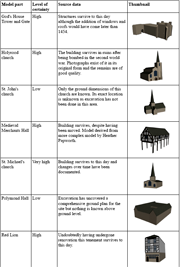 |
"I was very impressed by this extremely thorough investigative visualisation research project.
The technical knowledge and skills of the author are clearly extensive, but more impressive is the author's well developed critical awareness of authenticity
and conjectural transparency issues for virtual representation and interpretation in the cultural heritage context. The essay is extremely readable and
comprehensive account of an ambitious project. The academic apparatus and structure, barring a few minor lapses, are excellent. It is well presented and
illustrated. I would have like to seen slightly more diverse citation in the field of cultural heritage visualisation."
|
| Between Me and the Screen: Visualising Walter Gropiusís Total Theatre, by Rachel Hann, Practice as Research Ph.D. candidate, School of Performance and Cultural Industries, University of Leeds.
|
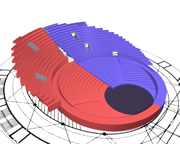 |
|
"This is a very solid applied research project, which revisits a historical subject with a novel and innovative approach. It is a super example of how 3D visualisation, applied objectively and methodically, can be an immensely valuable research tool. The essay is very well structured and the argument progresses clearly and logically. The academic apparatus is sound and argument is robustly supported by apt citations. There is clear evidence of a deep knowledge of the visualisation technologies employed." |
| Unwrapping the Mummy: Dissecting the 3D Virtual Body, by Tara Chittenden, Ph.D. candidate, London Institute of Education, University of London. |
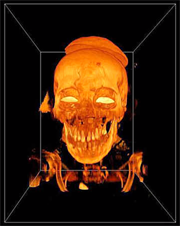 |
|
"A discursive essay, competently presented and argued, which displays a strong sense of operating in a wider critical and public context. In much the same way as Foucault and Derrida have argued that an archive is more about its own functionality than any historical evidence it might contain, Chittenden convincingly shows that, at least in the particular case she is investigating (the British Museum's Mummy: the Inside Story), the spectacular technology primarily becomes its own agent leading the viewer away from contemplation of the artefact. Thoroughly worthwhile and thought provoking." |
The following essays were also shortlisted to this award:
| Formal Approaches to Visibility and Movement in 3D Digital Reconstructions of Past Environments, by Eleftheria Paliou, Ph.D. candidate, Archaeology, University of Southampton.
|
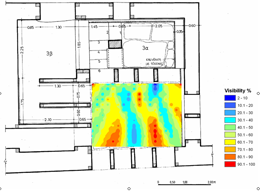 |
"A well-researched, informative and clearly documented paper."
"This research draws upon various quantitative spatial analysis methods, using these alongside 3D virtual modelling, as tools to
explore the meaning and contexts of architecturally fixed ancient murals." |
| Soundscape: Studio Report. Immersive Archives at CRiSAP, by J Milo Taylor, Ph.D. candidate, Creative Research into Sound Arts Practice Research Unit, London College of Communication. |
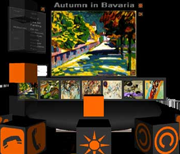 |
|
"...thought provoking, considered and well written."
"The main original contribution for this research appears to be in the compilation of a unique sound art archive with comprehensive cross-referenced meta-data. Delivering access to this with high-quality virtual acoustics seems essential for an authentic experience of such data." |
The 3DVisA Award was initiated and organised by Anna Bentkowska-Kafel. The 3DVisA Award is conducted in good faith for the benefit of students. The decision of the judging panel is final.
3DVisA Student Award 2007 Judging Panel:
Dr Angela Geary is Reader in visualisation of cultural heritage at University of the Arts London. Since completing her Ph.D. at the Royal College of Art, she has pioneered the development of accessible 3D computer visualisation techniques for the documentation and interpretation of cultural heritage collections. In 2004 she led the VEMDis team to win a finalistís prize in the National Research Councils UK Business Plan Awards for a scheme to commercialise a novel augmented reality display device for museums. She now co-directs VEMDis Ltd. She collaborated with Imperial College London and Tate on the AHRC-funded FELSSO project, the first to tackle the virtual modelling of strain and damage in large stone sculpture using advanced 3D scanning technology and the engineering technique of Finite Element Analysis. The Henry Moore Foundation also supported the project and permitted thee use of Henry Mooreís Large Arch (1980) in travertine as the primary test case for the research. She is a consultant and advisor, providing specialist 3D imaging services to the Museum of London, the National Trust and Historic Royal Palaces.
Daniel Pletinckx has an extensive experience in system design, quality assurance, digital image processing and synthesis, 3D and virtual reality through a career of 15 years in private industry. He was chief consultant to the Ename 974 project, Belgium, and co-founded the international Ename Center for Public Archaeology and Heritage Presentation. He is Director of Visual Dimension bvba, which consults major European heritage organisations on innovating and optimising the use of ICT technology in cultural heritage and tourism. Visual Dimension specialises in new, efficient ways of digitising existing cultural heritage objects and monuments, and in virtual reconstruction of historical buildings and landscapes. He is also a founding member of the European 6FP IST EPOCH Network of Excellence that deals with optimising the use of ICT in Cultural Heritage, and acts as Coordinator for Integration Activities.
Joseph Robson studied architecture at undergraduate and post-graduate level. He has been working in the field of 3D visualisation for over 15 years. During this time he has conducted studies into most fields of 3D digital investigation from early pioneering virtual reality applications through to entire city reconstruction. He currently run a visualisation group studying and working with the visual representations of architecture and the built/unbuilt environment.
3DVisA wishes to thank Professor Colin Platt and Professor Barry Smith for their advice and help.
3DVisA Student Award 2007 is sponsored by: 
JISC 3D Visualisation in the Arts Network (3DVisA)
www.viznet.ac.uk/3dvisa
3DVisA is funded by JISC and hosted by Kingís Visualisation Lab in the Centre for Computing in the Humanities, King's College, London.
At the heart of this initiative is recognition of the ever greater role 3D visualisation plays in humanities research, and the need for discussion and promotion of
3D methodologies on an academic level. The Network exists to support those interested or actively engaged in the creation and use of digital 3D visualisations in Arts
and Humanities. 3DVisA advises on training opportunities; publishes academic papers and documents 3D projects, both past and current; and is
soliciting views on the needs of the 3D visualisation community, inviting comments and participation in its activities. 3DVisA
also provides the Secretariat for The London Charter, a proposed international benchmark for the use of three-dimensional visualisation in the research and communication
of cultural heritage which is now open to consultation (www.londoncharter.org).
AHRC ICT Methods Network
www.methodsnetwork.ac.uk
The AHRC ICT Methods Network promotes and supports the use of advanced ICT methods in arts and humanities research. It funds and initiates a range of specialised
activities such as Expert Seminars, Workshops, Seminars and Workgroups, across the humanities and arts, as well as providing bursaries for major conferences including CHArt,
Computers and the History of Art and DRHA, Digital Resources for the Humanities and Arts.
Intellect
www.intellectbooks.com
Intellect published its first journal in 1986 and its first book in 1987. Since then they have served the academic community by publishing authors and
editors with original thinking. Intellectís publications relate to visual culture and creative media, and cover art, film, television, design, education, language,
gender study, and international culture.
Prestel
www.prestel.com
Prestel is one of the world's leading illustrated book publishers with a stunning list of beautifully crafted books on all aspects of art,
architecture, photography and design. From the latest street art and fashion to major exhibition catalogues, Prestel ensures that quality reigns throughout everything
they publish. Prestel is the publisher for art lovers, designers and those with an eye for beauty - young and old alike. Prestel appeals to all those with a passion
for visual culture.
© 3DVisA, 14 December 2007.
|
